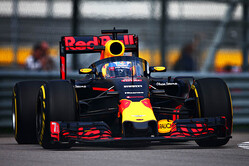


04/05/2016
NEWS STORY
 FIA safety director dismisses arguments put forward by drivers as sport pushes ahead with cockpit safety device.
FIA safety director dismisses arguments put forward by drivers as sport pushes ahead with cockpit safety device.
As the argument over whether Formula One should introduce a driver cockpit safety device, be it the Halo or aeroscreen, intensifies, those on the one side argue that the introduction of such a device would be a step in the wrong direction, whilst others claim it is needed.
Basically, according to some we are attempting to mess with the very DNA of the sport.
Now, the FIA's Safety Director, has essentially put the issue in stark black and white, insisting that F1 cars only need to look dangerous rather than be dangerous.
Whilst fans, along with drivers are thankful for the many improvements carried out over the years, especially in the 22 years since Ayrton Senna's death, it is widely believed that this latest move will carry the sport over the precipice towards a time when cars are driven remotely.
"That we are aware that accidents like this can take drivers' lives and we are aware of a solution, then I think it is incumbent on us to do our best to make sure we can protect drivers more," said Whiting, according to the Guardian. "I do not think there is any doubt about that."
Referring to Lewis Hamilton's claim that he is aware when he steps into an F1 car that he is taking a risk, and that it is a risk he, and his colleagues are willing to take, not to mention that it is the danger that attracts fans, Whiting said: "I take his point, but there will always be risks.
"If you are driving a car that quickly. When you look at them on track, it's not until they go off the track that you realise how fast they are going and just what damage can be done. Cars will still look dangerous. Our job is to try and make them look dangerous without being dangerous.
"You only have to have an accident to see that it is dangerous," he continued. "There is nothing better than to see a driver get out of an incredibly damaged car like we saw with Fernando Alonso (in Melbourne). Everyone expects it.
"When you saw Kubica's accident in Canada a few years ago, somehow you just thought he was going to get out of it, and we want to improve the chances of that happening while the spectacle is still there."
Referring to the two devices, the Halo and aeroscreen, he confirmed, according to Autosport, the many more tests need to be carried out and that the permitted to for a driver to get out of his car may need to be increased.
"That will be quite an important factor," he admitted. "Looking at the actual opening, I can't see any difference between the two. We did a jump out test on Daniel (Ricciardo) on Thursday to make sure. He was only doing one lap but you never know what might happen. We wanted the comfort of knowing that he was able to get out of the car in the required time and he was and that will only get better.
"Teams will develop systems to make it easier for it to get out and if we eventually needed to add a couple of seconds to the time required to get out, that would be a small price to pay for the added protection for the driver's head.
"Some drivers have said to me this is not F1 and won't be F1 any more," concluded Whiting, "but then other drivers, most drivers I would say, are in favour of it, in fact very, very insistent upon it being introduced.
"Do you ever stop with safety research? Look at road cars 20 years ago some of the things you see on road cars now you would not believe would be necessary but they are now normal."